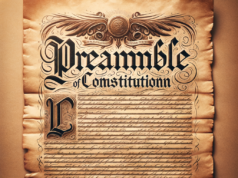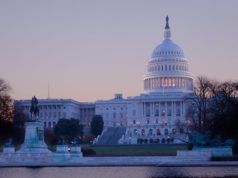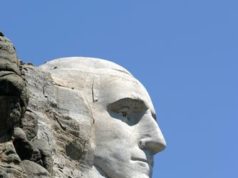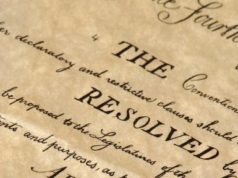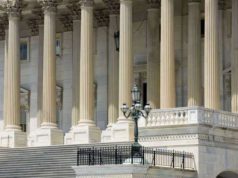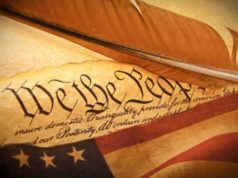Table of Contents
- 1 Background
- 2 The President’s Qualifications
- 3 The President’s Powers
- 4 The Electoral College
- 5 The President’s Term
- 6 Impeachment
- 7 Conclusion
- 8 What is Article 2 of the Constitution?
- 9 Amendments Concerning Article 2 of the Constitution
- 10 22nd Amendment
- 11 25th Amendment
- 12 Article 2 of the Constitution: Sections

Background
Article 2 of the United States Constitution is one of the most important parts of our country’s governing document. It lays out the powers and responsibilities of the President of the United States, who serves as the head of the executive branch of the federal government. Let’s take a closer look at what this article says, how it works, and why it’s important.
The President’s Qualifications
Section 1 of Article 2 outlines the qualifications for someone to be elected as President of the United States. According to the Constitution, the President must be:
– A natural-born citizen of the United States
– At least 35 years old
– A resident of the United States for at least 14 years
These qualifications are meant to ensure that the President is knowledgeable about and committed to the United States, and has the experience necessary to serve as the leader of the country.
The President’s Powers
Section 2 of Article 2 outlines the President’s powers and responsibilities. These include:
– Serving as Commander-in-Chief of the military
– Making treaties with foreign countries (with the advice and consent of the Senate)
– Appointing Supreme Court justices and other federal judges (with the advice and consent of the Senate)
– Pardoning people who have been convicted of federal crimes
– Delivering a yearly State of the Union address to Congress
– Recommending new laws and programs to Congress
– Ensuring that the laws are faithfully executed
All of these powers allow the President of the United States to have a significant impact on the direction of the country. They also require the President to work closely with Congress in order to achieve their goals. The President’s power to pardon people who have been convicted of federal crimes is one of their most unique and controversial powers. While it allows the President to show mercy to people who may have been unfairly punished, it can also be seen as allowing the President to abuse their power.
The Electoral College
Section 1 of Article 2 also establishes the Electoral College, which is responsible for electing the President of the United States. According to the Constitution, each state gets a number of electors equal to the number of Representatives and Senators that state has in Congress. This means that more populous states have more electoral votes than less populous states.
The Electoral College meets every four years to vote for the President of the United States. The candidate who receives the most electoral votes becomes President. This system is unique to the United States and has been the subject of controversy and debate over the years. Critics of the Electoral College argue that it can allow a candidate who did not win the popular vote to become President, and that it can unfairly advantage some states over others.
The President’s Term
Section 1 of Article 2 also establishes the length of the President’s term, which is set at four years. After serving for one term, the President can run for re-election and serve for a maximum of two terms.
This two-term limit was established after President Franklin D. Roosevelt was elected to four terms in the 1930s and 40s. The amendment was passed in the aftermath of his presidency to prevent another President from serving for an indefinite period of time. The two-term limit is meant to ensure that no one person has too much power in the federal government or becomes too entrenched in the position of President.
Impeachment
One other important aspect of Article 2 is the President’s oversight. Article 2 lays out a process for impeaching and removing the President from office. If the President commits “high crimes and misdemeanors,” he or she can be impeached by the House of Representatives. If the House votes to impeach, a trial is held in the Senate and the President can be removed from office if two-thirds of the Senate votes for removal.
This process of impeachment is meant to ensure that the President is held accountable for their actions in office. It is a check on the President’s power and is one of the ways that the Constitution ensures that no one person becomes too powerful in the federal government.
Conclusion
Article 2 of the United States Constitution is a vital part of our country’s governing document. It establishes the role of the President of the United States and outlines their powers and responsibilities. The Electoral College, the President’s term, and the process of impeachment are all important components of Article 2 that help to ensure that the President is held accountable and that the federal government is balanced and fair. By understanding the Constitution and the powers it grants to our government officials, we can better appreciate the importance of our political system and the people who lead it.
What is Article 2 of the Constitution?
Article 2 of the Constitution a section of the United States Constitution that addresses the Executive Branch of the Federal Government; this Article establishes the process and procedures granted to the Executive Branch of the government, which includes the President of the United States – Article 2 of the Constitution defines all matters with regard to the formation, structure, and system implicit to the Office of the President:
Article 2 of the Constitution is one of the 7 Articles that comprise the text of the Constitution of the United States of America; in addition to the Preamble, which serves as the introduction to the Constitution, the document is comprised of 8 total components
The Constitution of the United States not only outlined a framework for a legislative system, but also an identifiable statute reflecting the legal guidelines imposed with regard to the relationship between the United States Federal Government and its collective citizens
Amendments Concerning Article 2 of the Constitution
The Constitutional Amendments are a supplementary component with regard to the totality of the document; subsequent to the passing of Amendments, they serve as adjustment and alterations to preexisting text as it appeared in its original form – the Eleventh Amendment directly addresses Article 2 of the Constitution:
22nd Amendment
Date Proposed: March 21st, 1947
Date Ratified: February 27th, 1951
Contents of the Amendment: The 22nd Amendment outlines the process and procedure latent within individual, respective Presidential terms
25th Amendment
Date Proposed: July 6th, 1965
Date Ratified: February 10th, 1967
Contents of the Amendment: The 25th Amendment outlines a contingency replacement process in the event of the untimely death of the President of the United States
Article 2 of the Constitution: Sections
Within Article 2 of the Constitution, there exist 4 separate sections; within each section exist individual clauses with regard to the statutes expressed:
Article 2 of the Constitution: Section I. (President and Vice President)
Section 1 within Article 2 of the Constitution contains 8 Clauses:
Clause 1, Section 1, Article 2 of the Constitution: The powers granted to the President of the United States
Clause 2, Section 1, Article 2 of the Constitution: The Presidential Election Process
Clause 3, Section 1, Article 2 of the Constitution: The Electoral College System
Clause 4, Section 1, Article 2 of the Constitution: The Establishment of a Day for Election Proceedings to Take Place
Clause 5, Section 1, Article 2 of the Constitution: Guidelines of Eligibility for Presidential Candidacy
Clause 6, Section 1, Article 2 of the Constitution: Contingency and Presidential Replacement Process
Clause 7, Section 1, Article 2 of the Constitution: Monetary Compensation for Wages Earned by the President of the United States
Clause 8, Section 1, Article 2 of the Constitution: The Explication of the Presidential Oath
Article 2 of the Constitution: Section II. (Presidential Powers)
Section 2 within Article 2 of the Constitution contains 3 Clauses:
Clause 1, Section 2, Article 2 of the Constitution: Commander-in-Chief of the Military
Clause 2, Section 2, Article 2 of the Constitution: Explication of a Presidential Advisory Board and Cabinet
Clause 3, Section 2, Article 2 of the Constitution: Procedure with Regard to Senatorial Appointment
Article 2 of the Constitution: Section III. (Implicit Presidential Responsibility)
Section 1 within Article 2 of the Constitution contains 5 Clauses:
Clause 1, Section 3, Article 2 of the Constitution: Addressing the Country
Clause 2, Section 3, Article 2 of the Constitution: Addressing Congress
Clause 3, Section 3, Article 2 of the Constitution: Diplomatic Procedure
Clause 4, Section 3, Article 2 of the Constitution: Lawful Administration
Clause 5, Section 3, Article 2 of the Constitution: The Procedure of Awarding Military Commission
Article 2 of the Constitution: Section IV. (Removal from Office)
This Section addresses circumstances in which the removal from office – through impeachment – is applicable




